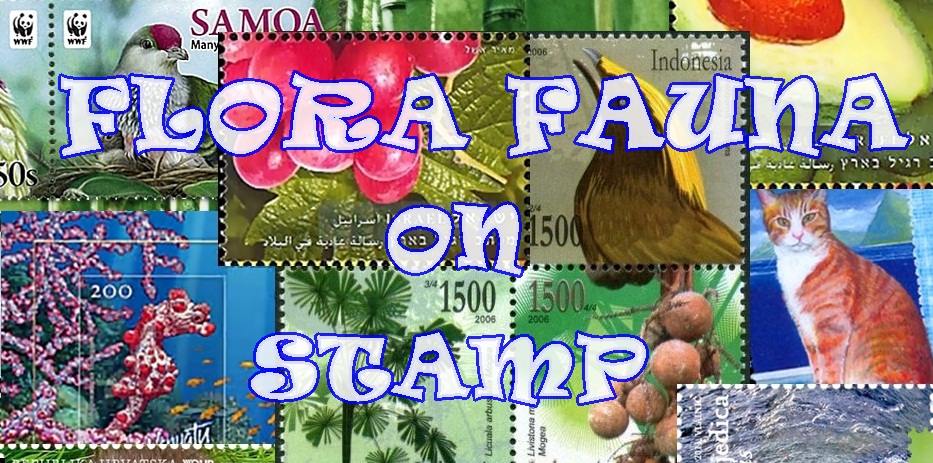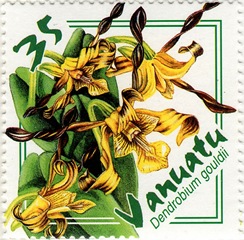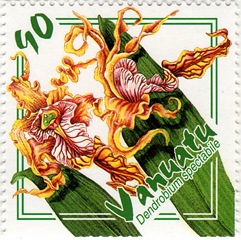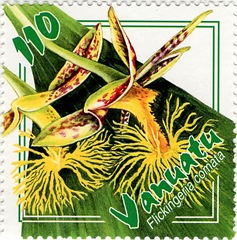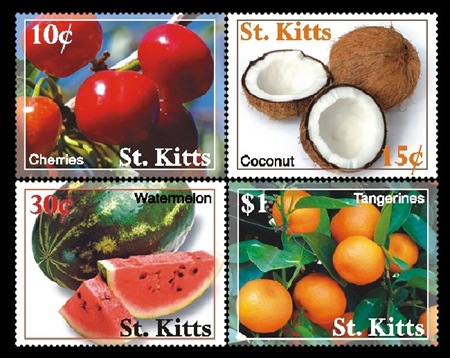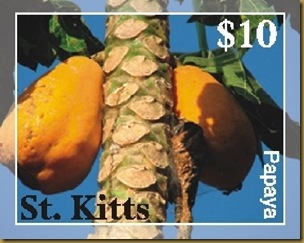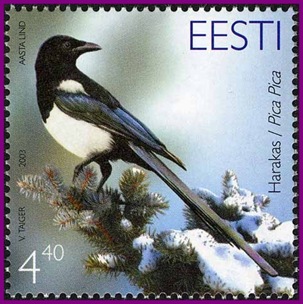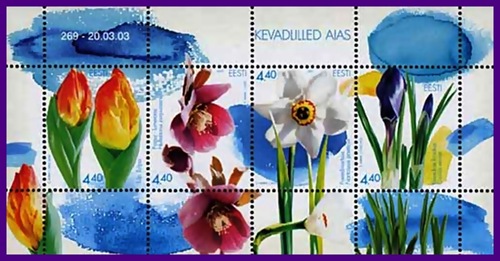Vanuatu Post has issued stamp series depicted the beautiful orchid flower such as: Dendrobium gouldii, Dendrobium polysema, Dendrobium spectabile, Flickingeria comata.Pictures of orchid flower are placed diagonally so adding good view side. There are unique stamps.
Dendrobium gouldii (35),
Dendrobium gouldii found in Papua and New Guinea and the Solomon Islands as a large to giant sized, hot growing epiphyte or lithophyte occurring in riverine forests, coastal forest, swamp forests, beaches and plantations at altitudes of sea-level to 700 meters with clustered, fusiform, many nodes, green stems carrying a few distichous, coriaceous, purple suffused in youth, obtuse leaves that blooms on an erect, to 35 to 70 cm long, axillary, racemose, several to many flowered inflorescence that arise from the upper nodes on mature leafy canes with 7 to 40 flowers occurring mostly in the fall. This species forms kiekies at the upper nodes of any damaged stem and they can be removed when it has more than 3 roots that are 2" long and grown as a seedling. A slight lessening of water and fertilizer in winter is beneficial to promote good plant growth.
Dendrobium polysema (60),
This small to large sized, species occurs in New Guinea, Solomon Islands, Santa Cruz Islands and Vanuatu at elevations of 1200 to 1900 meters and from the Solomon Islands, Bougainville Island, the Santa Cruz Islands, and Vanuatu were it is found at 150 to 750 meters in mist forests on mossy tree trunks and main branches with erect, 3 to 5 nodes below the leaves, yellow stems carrying, 2, elliptical-oblong, erect to spreading leaves.
Very similar to or synomonous with Dendrobium macrophyllum.The flower of this species is much smaller in size compared to standard Dendrobium macrophyllum.
Dendrobium spectabile (90) ,
Dendrobium spectable is a warm growing species native to New Guinea and the Solomon Islands. The 18 inch to 2 foot long canes produce masses of flowers that look like aliens from another world. The plant is easy to grow and flower if you follow the recommended cultural instructions. The flowers are long lasting and have a honey like scent. This plant requires good light to grow and flower properly.This plant typically flowers in the winter and early spring months but can also flower in late August through October. Each flower spike can produce 10 - 20 three inch flowers coloured in cream, tan, mahogany, purple, and green.
Flickingeria comata (110),
A common lowland, sprawling, large epiphytic species at elevations of sealevel to 850 meters in Penninsular Malaysia, Borneo, Sumatra, Papua and New Guinea, Java, the Philippines, New Guinea, Solomon Islands, NE Australia, Taiwan, Solomon Islands, Vauatu, Samoa, New Caledonia and Fiji . Its found on trees in open forests or in small trees after logging . Flower with 7 to 8 noded, clavate stems that branch from the upper 2 nodes and dry to yellow or orange and carrying very coriaceous, elliptic, obtuse leaves and the several, basal, terminal or from the upper nodes of the stem, single flowered inflorescence appear from woody to chaffy, ovate, acute bracts at the leaf axis.
Reference of Flickingeria comata. Dendrobium polysema adopted from “The Internet Orchid Species Photo Encyclopedia”.
